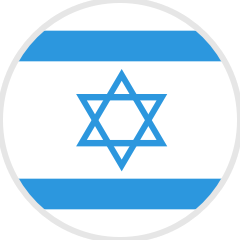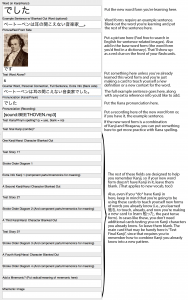Update 11/02/2022: This is an older post about using Anki software to create flashcards for language learning. I wrote it before we launched our proprietary language app and Live Coaching program.
The Fluent Forever app automates flashcard creation and review sessions in 13 languages, letting you concentrate on your learning and speeding up your progress. Coaching builds on the app with one-on-one practice, offering you a faster route to fluency.
Check out our products page to download the latest app version and sign up for Coaching.
I’ve been studying Japanese over the last few months. It’s a hard language, primarily due to the challenge of learning Kanji, and so I’ve been messing around with my card models, trying to find a combination of flashcards that will let me remember Kanji without becoming boring or overwhelming.
3,800 flashcards later, I feel like I’ve landed on a card model that does the job fairly well.
Now I’d like to share my results with all of you, so you can use them (and modify them to suit your own needs).
First off, a warning. This flashcard model is a beast. With 23(!) fields, it’s by far the most complex flashcard model I’ve developed, and using it is kind of convoluted.
You get used to it after a few hundred cards (after a thousand or two, it becomes second nature), but at first, it’s likely going to feel clunky for the computer-savvy and may be downright uncomfortable for the not-so-computer-savvy.
Perhaps later on, based on comments and suggestions here, I can make a more streamlined model that gets the same results.
For now, I’ve tried to make this a bit easier by making a video tutorial for the deck. I highly recommend watching that if you’d like to get this thing working for you.
Before that, you’ll want to download, unzip, and install the deck.
Then watch the video:
Then, if you’d like a written out summary of what goes where, look through these annotated images.
Vocabulary cards (“I’d like to teach myself the word ‘音楽家’ (musician).”)
These cards can be used for simple words you’re learning straight from pictures (dog, cat) or abstract words that fit into example sentences (The cat is in the box). Click the picture to enlarge.
Word form cards (“I’d like to teach myself ‘でした’, the past tense of a word I already know, ‘です.’”)
Use these cards to teach yourself verb conjugations, noun declensions, etc. Basically, if you see something in a sentence that’s a new form of a word you already know, use these cards. Click the picture to enlarge.
Word order cards (“I want to help myself remember that ‘でした’ goes at the end of a sentence.”)
Anytime you encounter a sentence with a surprising word order, use these cards to help yourself remember which word goes where. Click the picture to enlarge.
That’s it! Enjoy and feel free to post comments, suggestions, and questions in the comments.
Remember, you can now download the Fluent Forever app and sign up for Live Coaching to learn Japanese quickly and effectively.
Find out how you can master the language even faster with these 10 pro tips for the best way to learn Japanese.
[shareaholic app="share_buttons" id="28313910"]



















